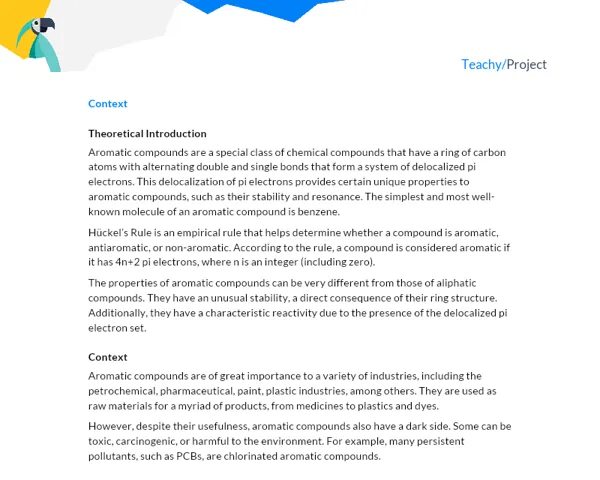Contextualization
The study of chemical reactions is one of the fundamental bases of Chemistry. Addressing the topic of Solubility Product (Ksp) is necessary for a more complete understanding of this area. Ksp describes the reaction of solid substances dissolving in a solvent to form ions. Each substance has a specific Ksp, which is constant at a certain temperature and indicates its solubility in that medium. Understanding this concept is essential for the conscious handling of these compounds in industry, laboratory, or even in school experiments.
The dissolution reaction can be represented by the generic equation:
AB(s) ↔ A+ (aq) + B- (aq)
The molar product of the concentrations of ions in solution, in equilibrium with the solid, is known as the solubility product (Ksp).
In the equation above, if we assume that 'a' is the solubility of AB in moles per liter, then the molar concentration of ions A+ and B- will also be 'a' since each formula unit of AB produces one A+ ion and one B- ion.
Therefore, the Ksp of AB will be a^2.
Ksp = [A+][B-]
Ksp = a * a
Ksp = a^2
The chemical industry, in its vast array of applications, uses the knowledge of Ksp to predict the solubility of substances in different environments and temperatures, ensuring the efficiency of processes and the safety of its products. Furthermore, this concept finds a place in environmental discussions, as contaminants dissolved in water or air can become serious public health problems, such as lead and mercury. A greater understanding of these phenomena can lead to effective solutions for decontaminating these environments.
To develop your understanding in this topic, we suggest some reliable sources in Portuguese for you to base and delve deeper into the subject:
- Book: "Química: A Ciência Central" by Theodore L. Brown, H. Eugene LeMay Jr., Bruce E. Bursten, Catherine Murphy, Patrick Woodward.
- Website: Khan Academy (https://pt.khanacademy.org/)
- Videos: YouTube Channel "Química em Ação - Prof. Paulo Valim" (https://www.youtube.com/watch?v=lykiCx4L-Uo&list=PLiL9vAIC37tRTuBX4QkapuHSQfDTLvq9f)
Practical Activity: Solubility in Everyday Life
Project Objective
The main objective of the project is to provide a better understanding of the concept of Solubility Product (Ksp) through a practical activity that simulates solubility situations in everyday life.
Detailed Project Description
Students will be divided into groups of 3-5 people. Each group must select five different substances (such as table salt, sugar, baking soda, coffee, among others) and perform experiments to determine the maximum amount that can be dissolved in 100g of water at room temperature. Based on the experimental results, students should discuss the relevance and application of the Ksp concept in everyday situations.
Required Materials
- Five different solid substances
- Precision scale
- Water
- Five containers (cups, jars, or beakers)
- Spoon for stirring
- Thermometer
Detailed Step-by-Step for Carrying Out the Activity
- Divide into groups of 3 to 5 students.
- Each group must select five different substances to be used in the experiment.
- Take the first container, fill it with 100g of water, and note the water temperature.
- Add the first substance you selected to the water and stir until the substance stops dissolving and settles at the bottom of the container.
- Record the amount of substance that was dissolved in the water.
- Clean the container and repeat steps 3-5 for all other substances.
- After conducting the experiments with all substances, compare the results and discuss your findings in terms of the Ksp concept.
Deliverables and Document Writing
At the end of the project, each group must produce a report on the activity carried out. The report should be organized into four main sections: Introduction, Development, Conclusions, and Bibliography.
-
Introduction: In this section, students should contextualize the Ksp theme and its relevance in real situations. The project's objective and a brief description of the experiments conducted should also be presented.
-
Development: In this part of the report, students should describe the theory of Ksp and how it applies to the experiments conducted. A detailed description of the activity, the methodology used, and the presentation and discussion of the results should be addressed here.
-
Conclusions: In this final part of the document, students should summarize the main points of the report, express what they learned from the project, and draw conclusions.
-
Bibliography: In this section, students should indicate the sources they relied on to carry out the project, such as books, websites, videos, etc.
The final report will be a way to assess not only the students' understanding of the topic but also their skills in working in a group, effectively communicating their ideas, and managing their time efficiently.

